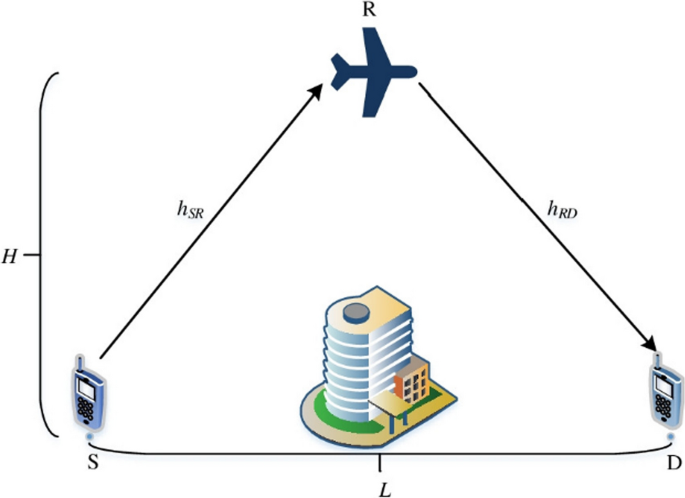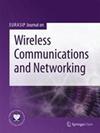通过联合功率和轨迹优化实现无人机放大和转发中继的能源效率最大化
IF 1.9
4区 计算机科学
Q2 ENGINEERING, ELECTRICAL & ELECTRONIC
EURASIP Journal on Wireless Communications and Networking
Pub Date : 2023-09-13
DOI:10.1186/s13638-023-02304-w
引用次数: 0
摘要
摘要研究了一种基于无人机(UAV)的中继系统的能效最大化优化问题,其中固定翼无人机作为放大前向移动中继,辅助源节点和目的节点之间的数据传输。在满足无人机速度和加速度约束的前提下,通过联合优化无人机的飞行轨迹以及源和无人机继电器各自的发射功率水平,实现继电系统的能效最大化。初始节点优化问题是非凸的,不能直接求解。为此,将联合优化问题分解为两个子问题,分别采用逐次凸逼近技术和Dinkelbach算法进行求解。在此基础上,提出了一种有效的迭代算法,通过块坐标下降技术来解决联合优化问题。仿真结果表明,该算法可根据系统情况灵活调整无人机的飞行轨迹和各节点的发射功率电平,与基准方案相比具有更高的EE。本文章由计算机程序翻译,如有差异,请以英文原文为准。

Energy efficiency maximization for UAV-enabled amplify-and-forward relaying via joint power and trajectory optimization
Abstract This paper investigates an optimization problem corresponding to energy efficiency maximization of an unmanned aerial vehicle (UAV)-enabled relaying system, where a fixed-wing UAV acts as an amplify-and-forward mobile relay to assist data transmission between a source node and a destination node. On the premise of satisfying the speed and acceleration constraints of the UAV, the energy efficiency (EE) of the relaying system is maximized by jointly optimizing the UAV’s trajectory and the individual transmit power levels of the source and the UAV relay. The initial joint optimization problem is non-convex and cannot be solved directly. Therefore, the joint optimization problem is decomposed into two sub-problems which are solved by applying the successive convex approximation technique and the Dinkelbach’s algorithm. On this basis, an efficient iterative algorithm is proposed to tackle the joint optimization problem through the block coordinate descent technique. Simulation results demonstrated that by conducting the proposed algorithm, the flight trajectory of the UAV and the individual transmit power levels of the nodes can be flexibly adjusted according to the system conditions, and the proposed algorithm contributes to the higher EE compared with the benchmark schemes.
求助全文
通过发布文献求助,成功后即可免费获取论文全文。
去求助
来源期刊
CiteScore
7.70
自引率
3.80%
发文量
109
审稿时长
8.0 months
期刊介绍:
The overall aim of the EURASIP Journal on Wireless Communications and Networking (EURASIP JWCN) is to bring together science and applications of wireless communications and networking technologies with emphasis on signal processing techniques and tools. It is directed at both practicing engineers and academic researchers. EURASIP Journal on Wireless Communications and Networking will highlight the continued growth and new challenges in wireless technology, for both application development and basic research. Articles should emphasize original results relating to the theory and/or applications of wireless communications and networking. Review articles, especially those emphasizing multidisciplinary views of communications and networking, are also welcome. EURASIP Journal on Wireless Communications and Networking employs a paperless, electronic submission and evaluation system to promote a rapid turnaround in the peer-review process.
The journal is an Open Access journal since 2004.

 求助内容:
求助内容: 应助结果提醒方式:
应助结果提醒方式:


